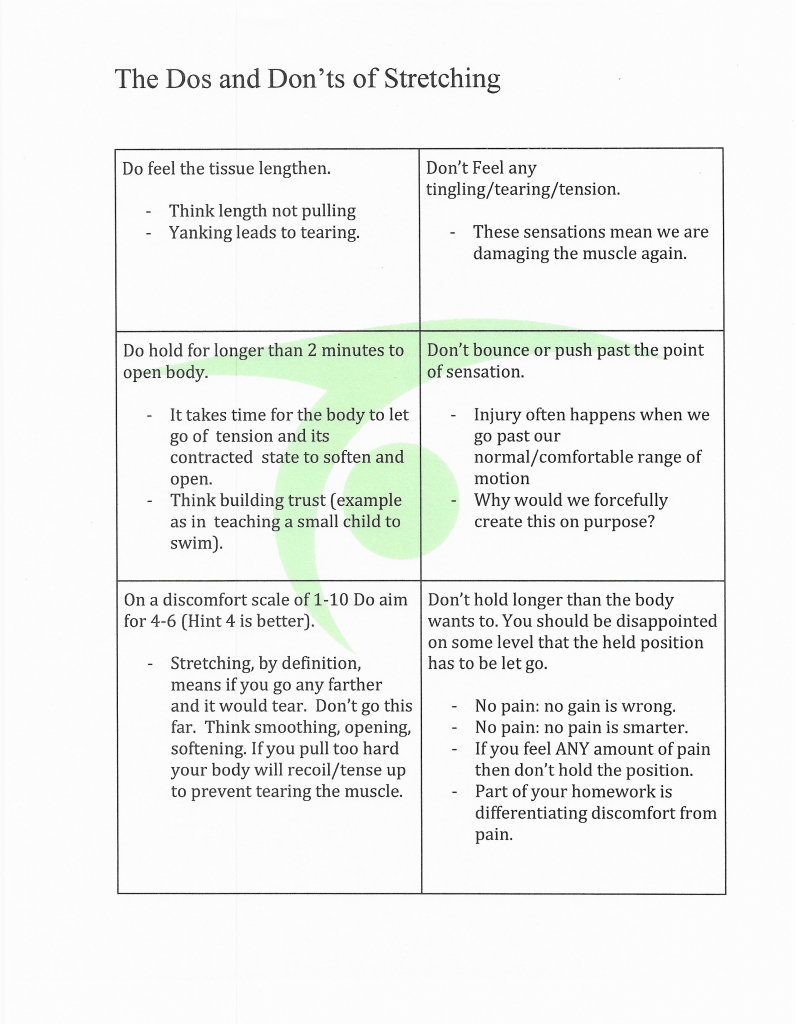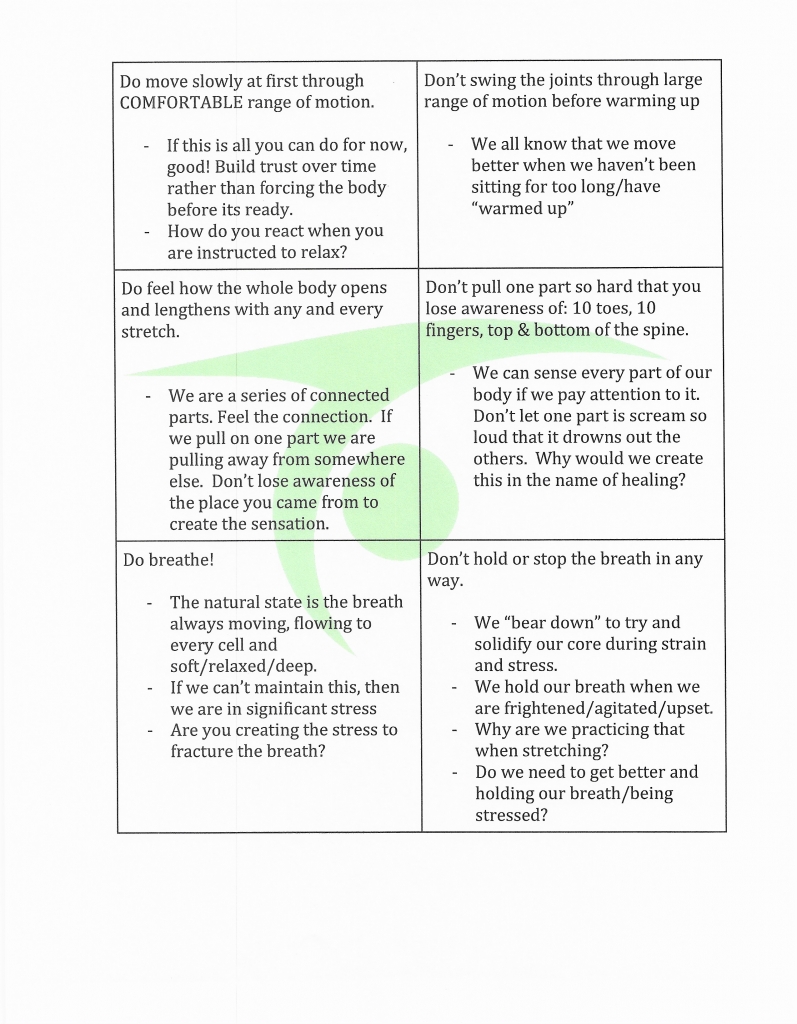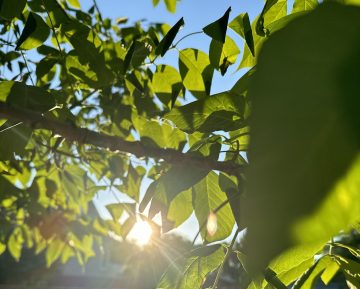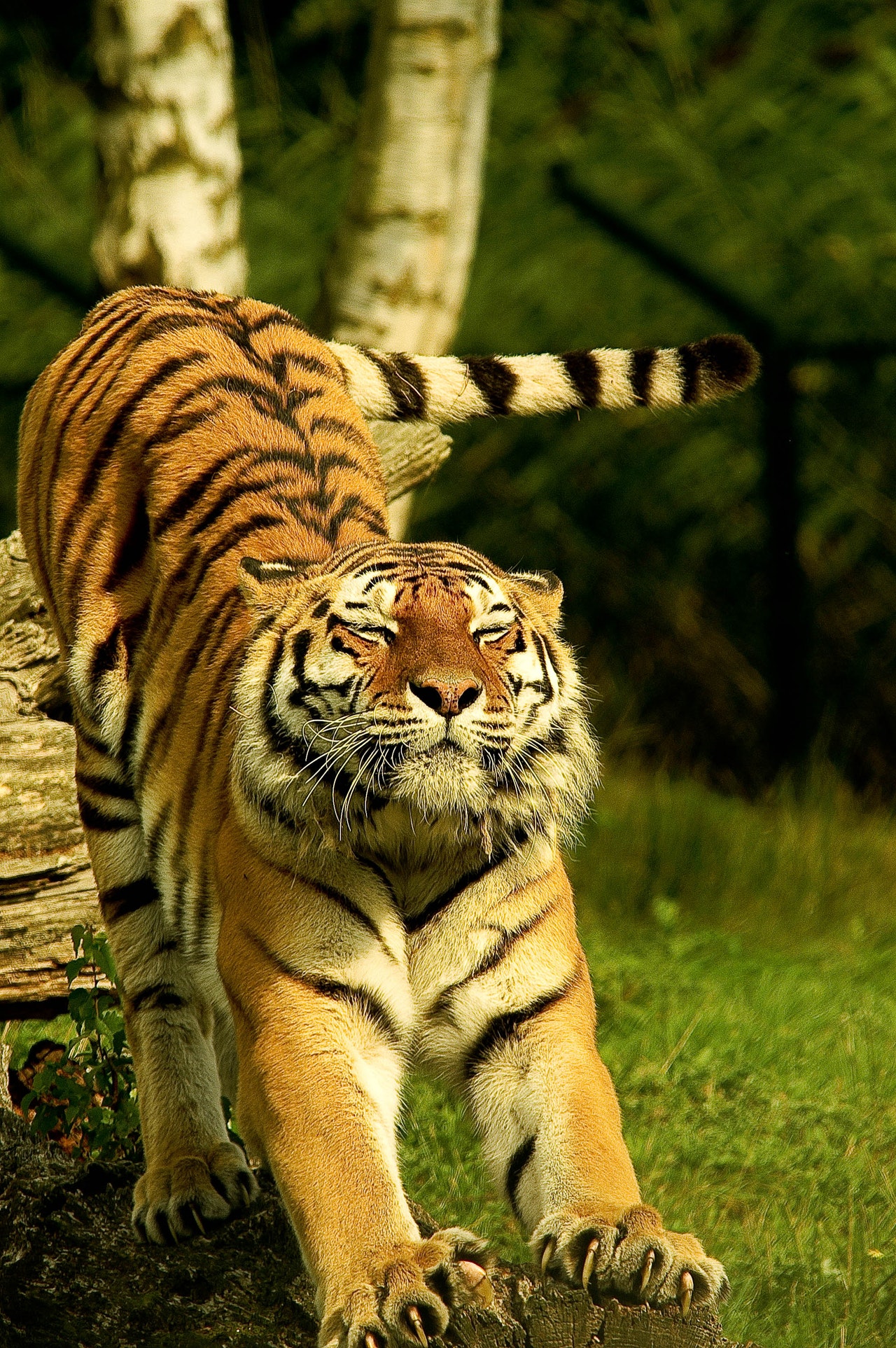
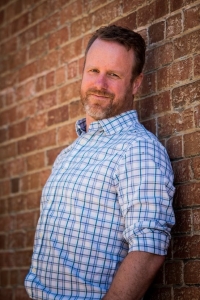
Reg Nugent, MA, RAc
As a former university team athlete, current martial artist and yoga teacher trainer (with a masters degree in exercise physiology) I am NOT surprised to hear from so many people how many misinterpretations they hold about stretching.
From my personal experience teaching Yoga teachers I have come to know that yoga/stretching done well is great and done incorrectly can be injurious. More recently, from my clinical experience working with acupuncture to correct postural injuries, I have come to see helping clients to understand the principles of how to stretch properly can be as important or more important than the acupuncture treatment itself!
As Acupuncturists we are trained to use our skills to relax and activate muscles within a treatment. We are able to help balance joints, correct posture and increase responsiveness of muscle complexes.
Stretching is not good or bad.
An important rule to start with, chronically painful or injured muscles, or an over lengthened muscle should not be stretched.
Stretching at its best is used to prevent injuries to maintain the natural length of a muscle that has become too short. For instance, when we stay in a static position for long periods of time (like sitting all day at a computer), our bodies adapt to be efficient, such as adopting a slouching posture. Here the front pectoral chest muscles shorten and the rhomboid muscles (the ones between our shoulder blades that pull our shoulders back straight) end up getting exhausted to hold us upright. Even when we are not sitting, if these pectoral muscles have shortened due to sitting so much, we now will be looking like we are slouching all the time while standing. This not only is not attractive, it is not functional; it sets us up for injuries when we are lifting and using our upper body (and that’s when we get to meet you!).
Solution exercises:
People are often emphasizing working out these pectoral muscles with push-ups or bench presses and they become strong and shortened. So here we would try and lengthen these muscles by doing specific stretches; this would allow the shoulder to return to a healthy stable position and posture.
See how you can stretch the pectoral muscles in the video below.
Often people will be stretching the sore neck (upper trapezius muscles) and rhomboid muscles — these are the ones that are complaining when we are slouching too much. Doing this one makes things even worse. Again, stretching the sore muscle is not usually a good idea if they are over-stretched already as they are when we hang from them in a slouch. The pectoral muscles can even more easily over power the rhomboids, with the shoulders going into an even deeper forward slouch. Instead, we give you exercises to activate and engage these rhomboid muscles in the back so they can stabilize the shoulders in the correct and natural posture. For instance, exercises like simply slowly pinching the shoulder blades together, or doing reverse fly exercises with dumb bells are necessary to match the stronger opposing pectoral muscles in the front.
Assistance with Acupuncture:
Often when someone comes to us for acupuncture because of neck or upper back pain, we will focus first on “releasing” the pectoral muscles on the chest which are often over-active. Once we relax the pectoral muscles by doing acupuncture at the trigger points or motor points, we may also release the upper trapezius muscles on the top of the shoulder which are attached to the back of the head and are associated with tension headaches. These shrug muscles are working hard to hold up the head in the slouch position and are over worked in many). Lastly, but perhaps most importantly, we “activate” or “wake up” the rhomboid muscles that are not being engaged very much when we hang from them in the slouch position. Electro-acupuncture on these muscles can make them more responsive and able to do their share in holding up a straight posture if the pectoral muscles will give them the room to do so! Together with stretches the acupuncture is very synergistic and often makes a difference to someone making a turning point in posture.
